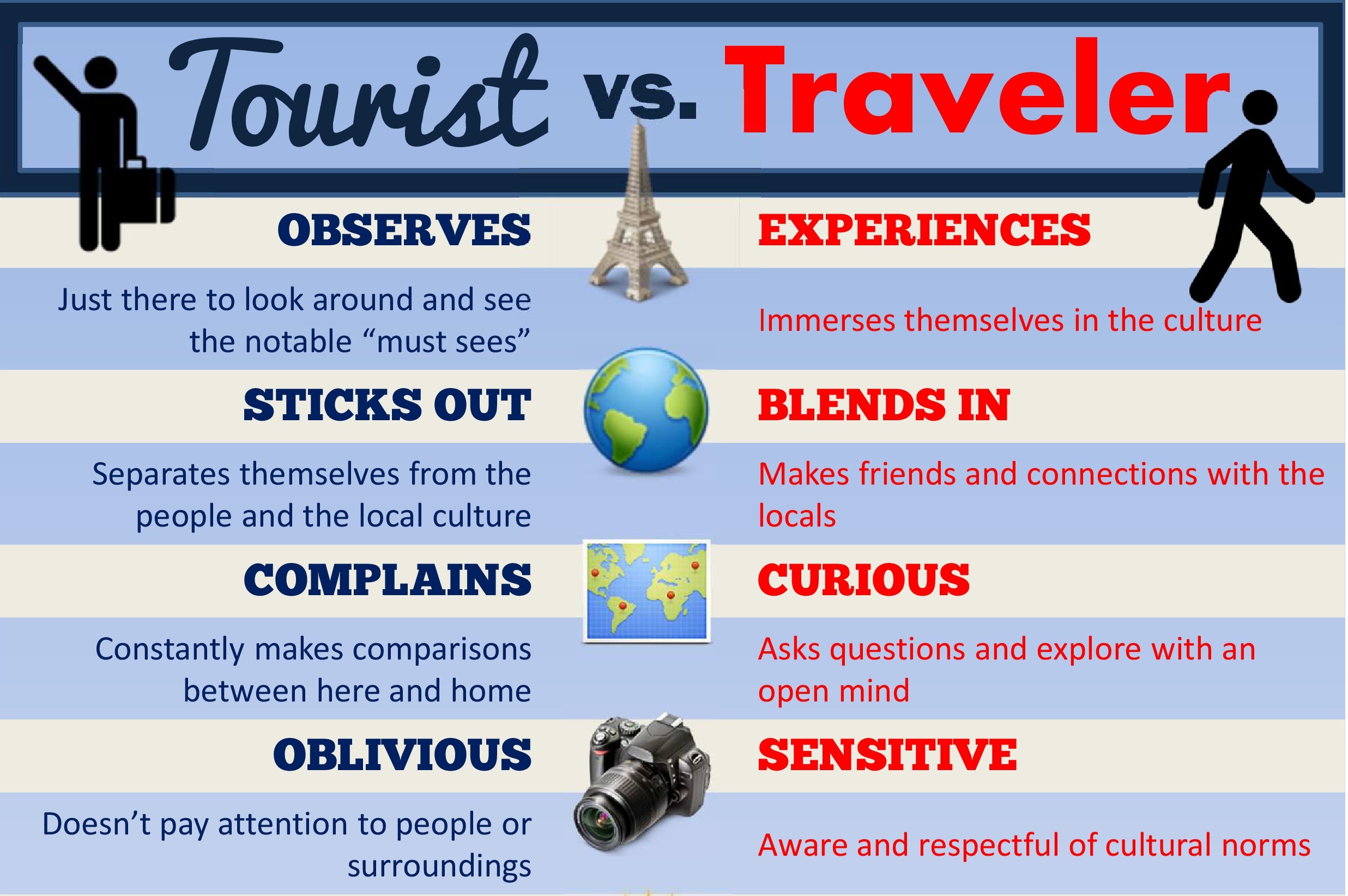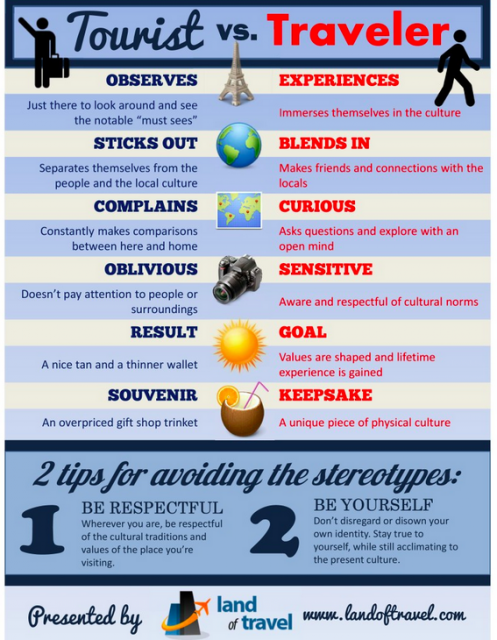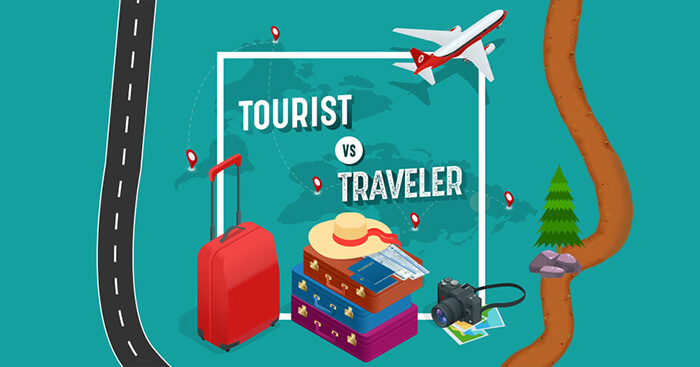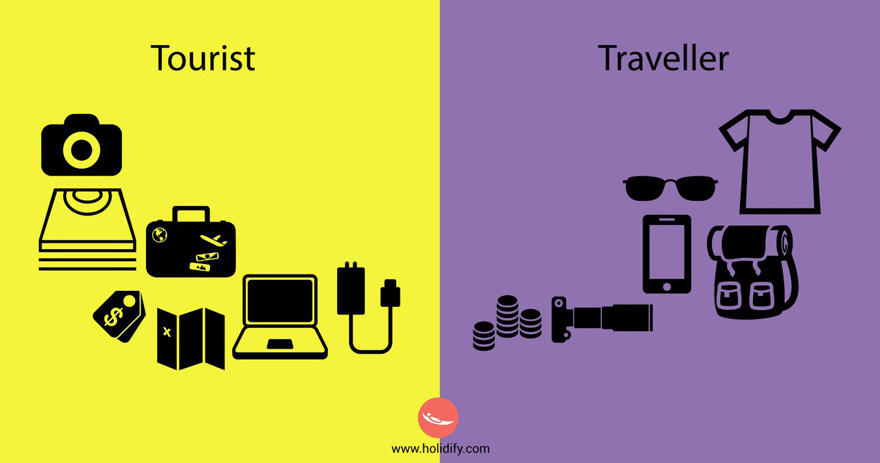When it comes to exploring new places, the terms “traveler” and “tourist” are often used interchangeably. However, there are distinct differences between the two, and understanding these can enhance your travel experiences. In this article, we’ll delve into what separates travelers from tourists, share personal anecdotes, and provide tips to help you make the most of your journeys.
The Traveler vs Tourist Debate
What Defines a Traveler?
A traveler is someone who seeks deeper connections with the places they visit. They prioritize cultural immersion, experiencing local traditions, and engaging with communities. My first solo trip to Thailand as a traveler taught me the beauty of immersing myself in another culture—learning to cook pad Thai with locals, participating in their festivals, and staying in family-run guesthouses.
What Defines a Tourist?
In contrast, a tourist often opts for a more surface-level exploration, focusing on famous landmarks, guided tours, and popular attractions. During a trip to Paris, I noticed many tourists flocking to the Eiffel Tower, snapping selfies without experiencing the charming streets of Montmartre or indulging in a quiet café. Both approaches have their merits, but they cater to different types of experiences.
Key Differences Between Travelers and Tourists

Mindset and Intentions
| Aspect | Traveler | Tourist |
|---|---|---|
| Mindset | Curiosity and exploration | Leisure and relaxation |
| Intentions | Immerse in local culture | See major attractions |
Experience and Engagement
| Aspect | Traveler | Tourist |
|---|---|---|
| Experience | Authentic interactions | Curated experiences |
| Engagement | Connect with locals | Follow guides |

Pros and Cons of Being a Traveler and a Tourist
Pros and Cons of Travelers
Pros
- Deeper cultural understanding
- Unique experiences
- Connection with locals
Cons
- May face language barriers
- Less predictable itineraries
- Possible discomfort in unfamiliar settings

Pros and Cons of Tourists
Pros
- Convenience and comfort
- Structured itineraries
- Access to popular attractions
Cons
- Limited interaction with locals
- Miss out on hidden gems
- May feel rushed
Travel Tips: How to Embrace Both Roles
Whether you’re leaning towards being a traveler or a tourist, here are some tips to embrace both roles during your journeys:

1. Research Your Destinations
Understanding the history, culture, and local customs can enrich your experience. Dive into travel blogs, watch documentaries, or read novels set in the destination.
2. Engage with Locals
Take the time to converse with local residents. Ask for their recommendations on eateries and attractions. Often, this leads to unforgettable experiences and friendships.

3. Balance Itinerary with Spontaneity
While having a plan is essential, leave room for spontaneity. Allow yourself to wander and discover hidden gems along the way. Some of my best memories are from unplanned detours!
Destination Highlights: Where Travelers and Tourists Overlap

1. Kyoto, Japan
Known for its temples and gardens, Kyoto offers both tourist attractions and opportunities for cultural immersion. Don’t just visit the Golden Pavilion; stroll along the Philosopher’s Path and enjoy a quiet moment among cherry blossoms.
2. Paris, France
The City of Lights caters to both types of visitors. While the Eiffel Tower is a must-see, be sure to explore the lesser-known neighborhoods like Le Marais for an authentic Parisian experience.

3. Bali, Indonesia
Bali is famous for beautiful beaches and vibrant nightlife, appealing to tourists. However, those willing to trek to Ubud will find a more tranquil, cultural side of the island—an experience that enriches the heart and soul.
FAQs About Travelers and Tourists
1. Are travelers more adventurous than tourists?
Travelers often embrace adventure more deeply, opting for experiences that challenge them. However, tourists can also enjoy adventure through guided excursions.
2. Can I be both a traveler and a tourist?
Absolutely! Many people blend both approaches, enjoying the comfort of tourist attractions while seeking deeper cultural experiences.
3. How can I shift from a tourist mindset to a traveler mindset?
Start by seeking local experiences, trying local food, and engaging with residents. Gradually, you’ll develop a traveler’s curiosity and appreciation for diverse cultures.
4. What are some common misconceptions about travelers?
One misconception is that travelers have to rough it or sacrifice comfort. Many travelers enjoy modern conveniences while choosing to connect deeply with their destinations.
Conclusion: Choose Your Journey Wisely
The choice between being a traveler or a tourist ultimately depends on your preferences and what you seek to gain from your adventures. Both roles offer unique experiences that can enrich your life. Remember, the world is vast, and there are many different ways to explore it. So, whether you’re snapping photos at iconic landmarks or getting lost in hidden alleyways, embrace every moment and create memories that will last a lifetime!